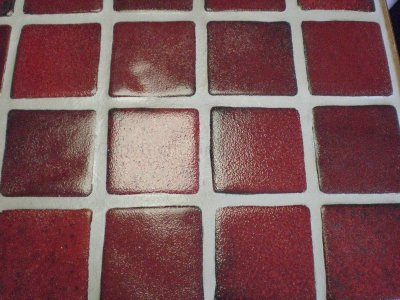Sealing Tile Grout
Sealing tile grout is required for most tile projects, but especially for those where grout joints need to be protected from moisture, mildew, or grease. In some instances, grout will not need to be sealed, so check product instructions before you attempt sealing.
Seal the Joints
Grout is the glue that holds tiles together. Yet it’s more than that. It also adds to the aesthetics of a tile project and with colorants being used these days, grout can truly be a complement to whatever tile you choose. For most tiling, you will want to protect these grout joints from any preventable damage. Fortunately, there’s grout sealant to the rescue.
Depending on where your tile is located (bathroom shower, kitchen backsplash, countertop, etc.), you’ll need a sealant that works for that particular setting. For guidance, go by what is recommended by the grout manufacturer. Also for consistency, once you’ve selected a brand, stick with it for all future resealing and repair.
As said, sealing tile grout is especially important for any tile that’s exposed to moisture, mildew, or grease. For example, sealing a kitchen countertop will protect it from any grease or oil the surface may come in contact with. For the bathroom, grout sealant is necessary to protect joints from any water that may seep through and possibly reach the underlayment.

Choosing a Grout Sealer
When choosing a grout sealer, you have two classifications: topical and penetrating.
- Topical: While this type of sealant resists water, it does not work for glazed tiles, such as those use in a shower or a backsplash. The sealant is a good choice for decorative work, as it can chance the color of grout. For floors and ceramic tiles, this type of sealer will work fine until it’s worn off (such as by foot traffic).
- Penetrating: Penetrating sealant fills in the microscopic spaces of grout. Once the water or mineral base solution evaporates, only solids are left behind — typically silicone or latex. By filling in the tiniest of pores in the grout, it makes the grout impervious to moisture.
Again, when it comes to sealing tile grout, choice of sealant largely depends on location. However, the type of grout is also telling. There are three main types: cement, epoxy, and furan resin.
Both cement-based and furan resin grouts are available in sanded and non-sanded versions. Epoxy grout is the most expensive of the three and is often used for surfaces that require water-resistance. What’s more, these grouts can be sealed using grout stains that alter the color of the grout and by doing so, seal the surface. If a stain is used, no further sealant is required.
Things to Remember About Sealing Tile Grout
For the do-it-yourselfer, there are a few things to remember when sealing tile grout. Keep them in mind when you start your project and you’ll avoid a good deal of mistakes:
- Cement grouts are porous and thus, should be sealed.
- A decorative colorant/stain cannot be used on grout that’s been sealed.
- Sealing grout will prevent it from staining (from age or use).
- For glazed tile, it’s better not to use a spray sealant.
- Though the two main sealants are penetrating and topical, there are hybrids on the market.
- Penetrating sealers will repeal oil-based stains.
- When applying a sealant, always wait at least 48 to allow the grout to completely set.